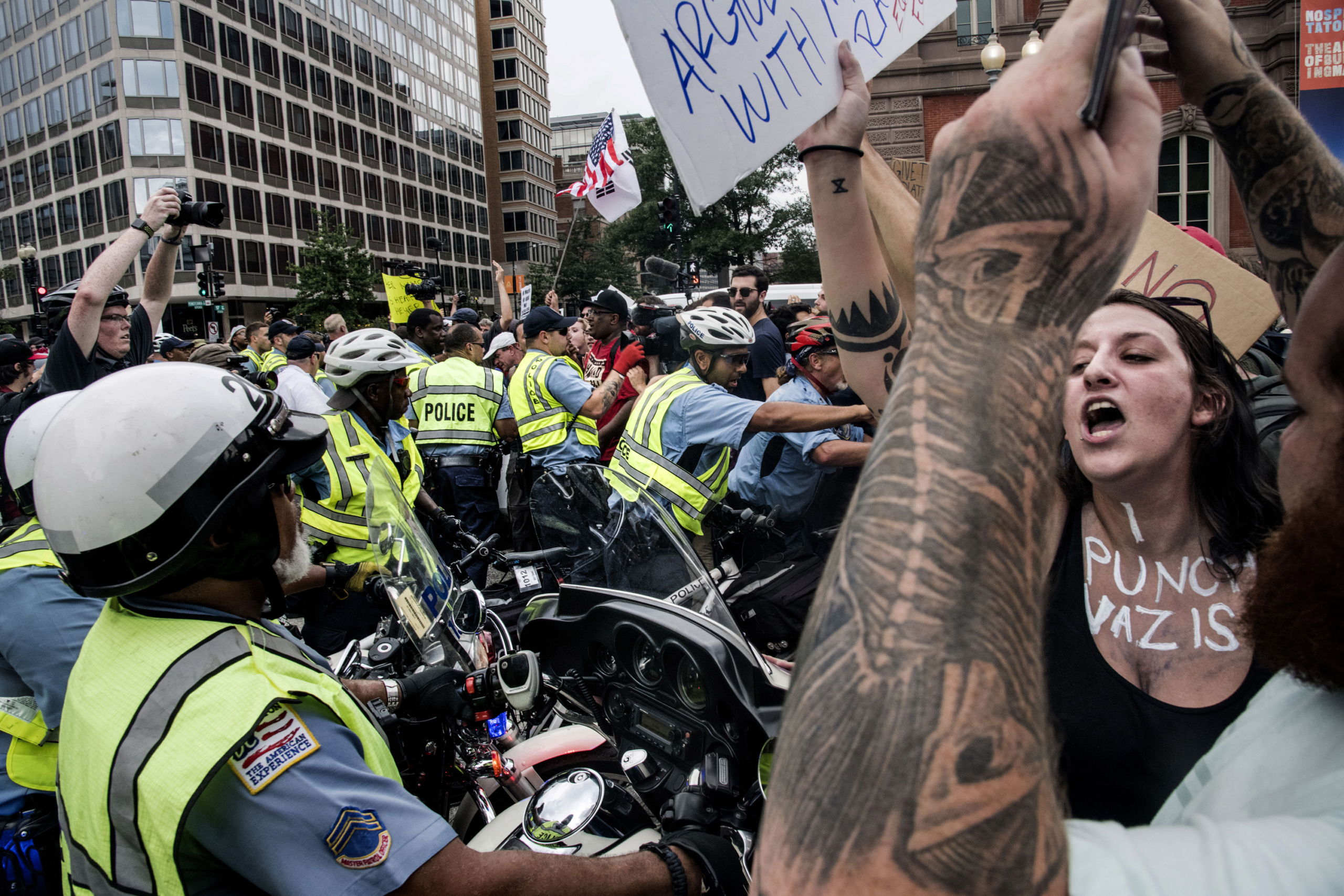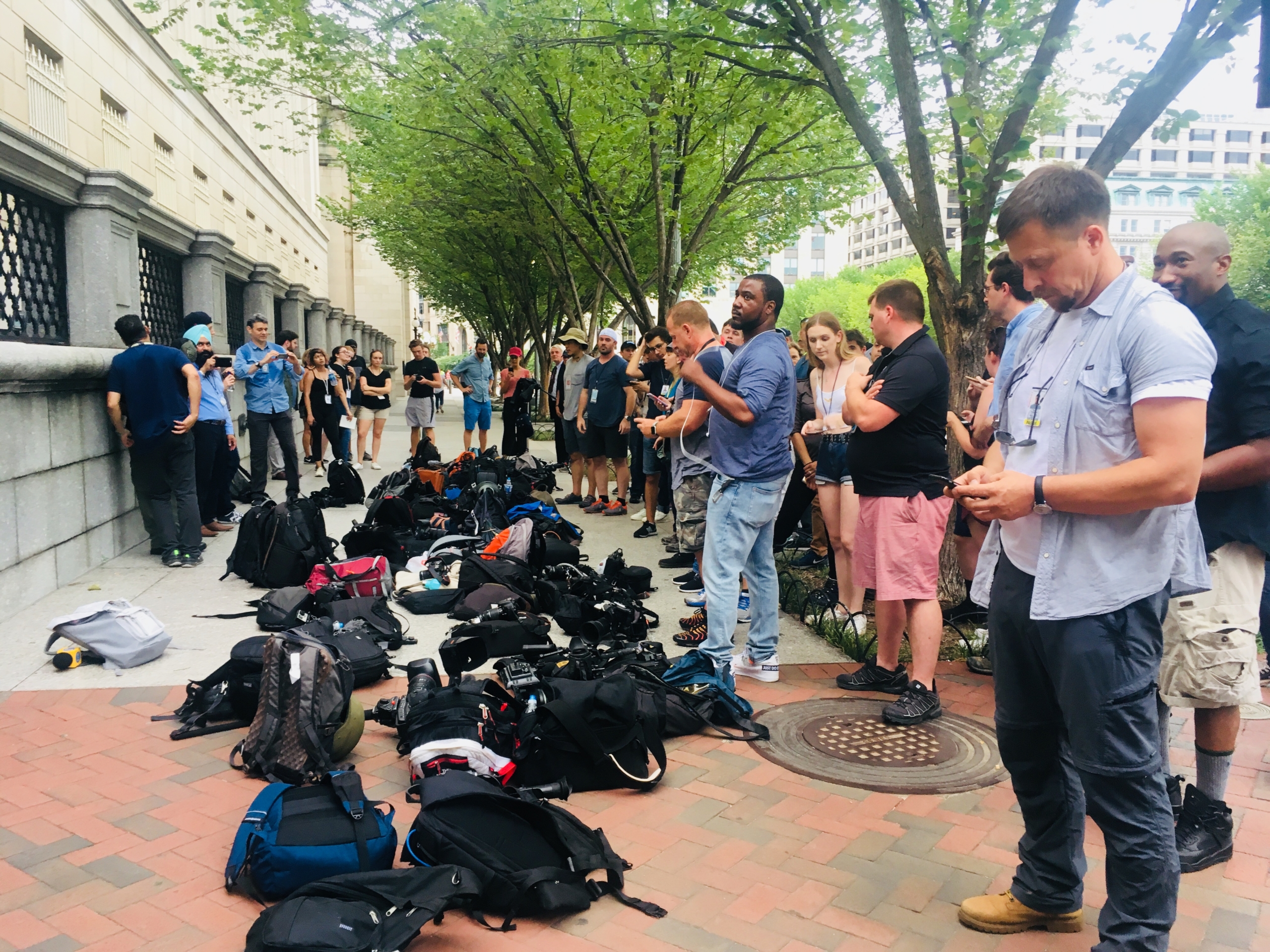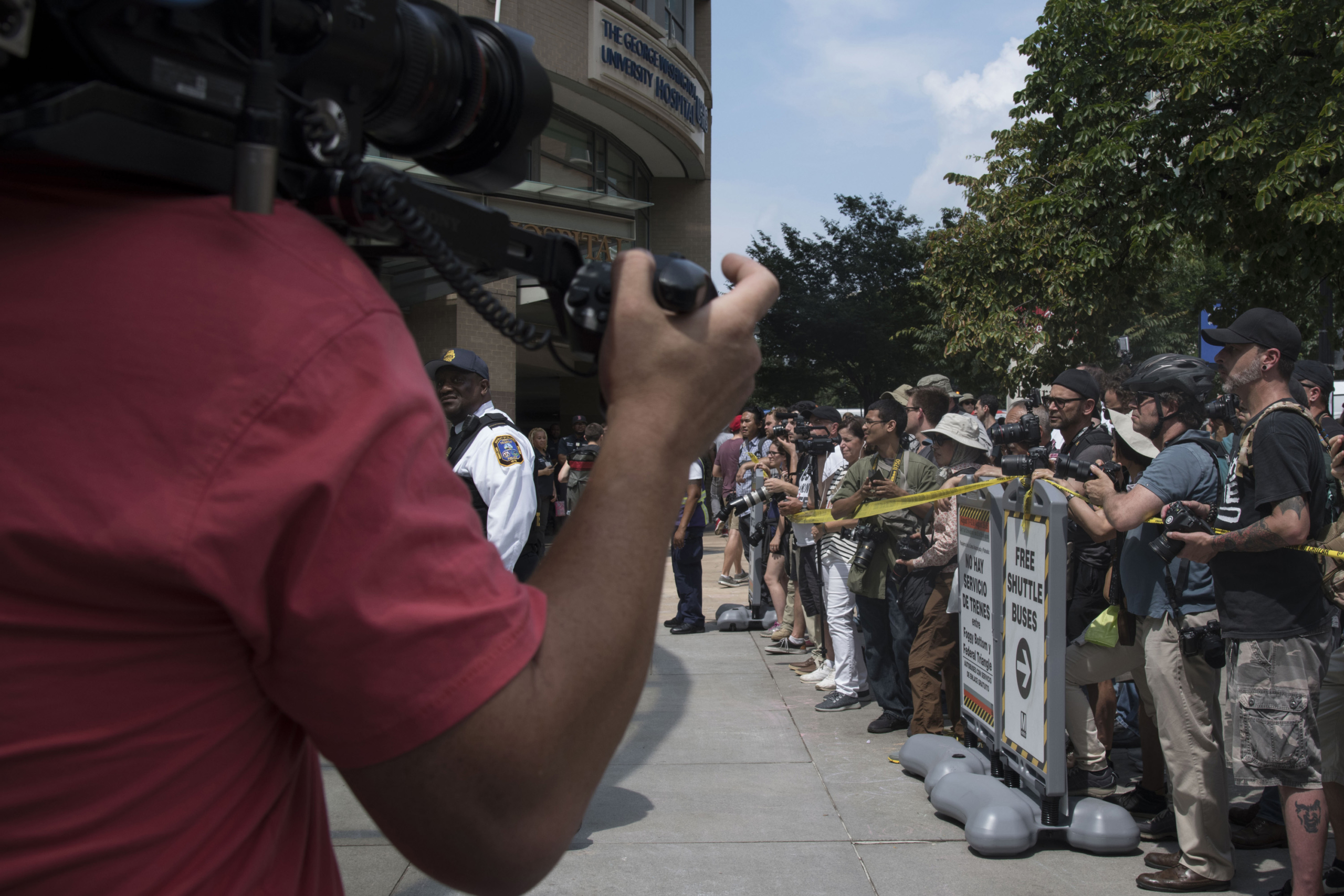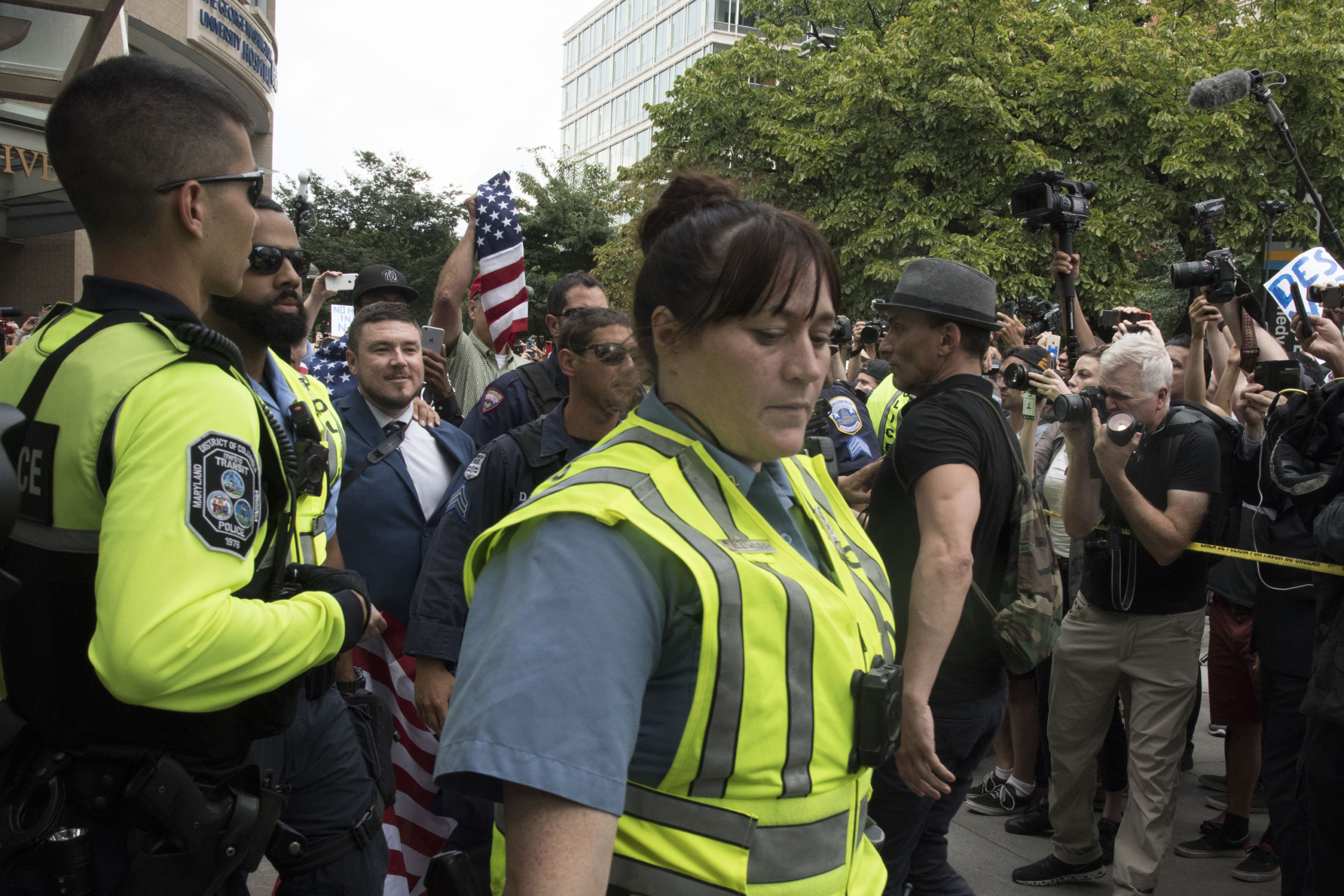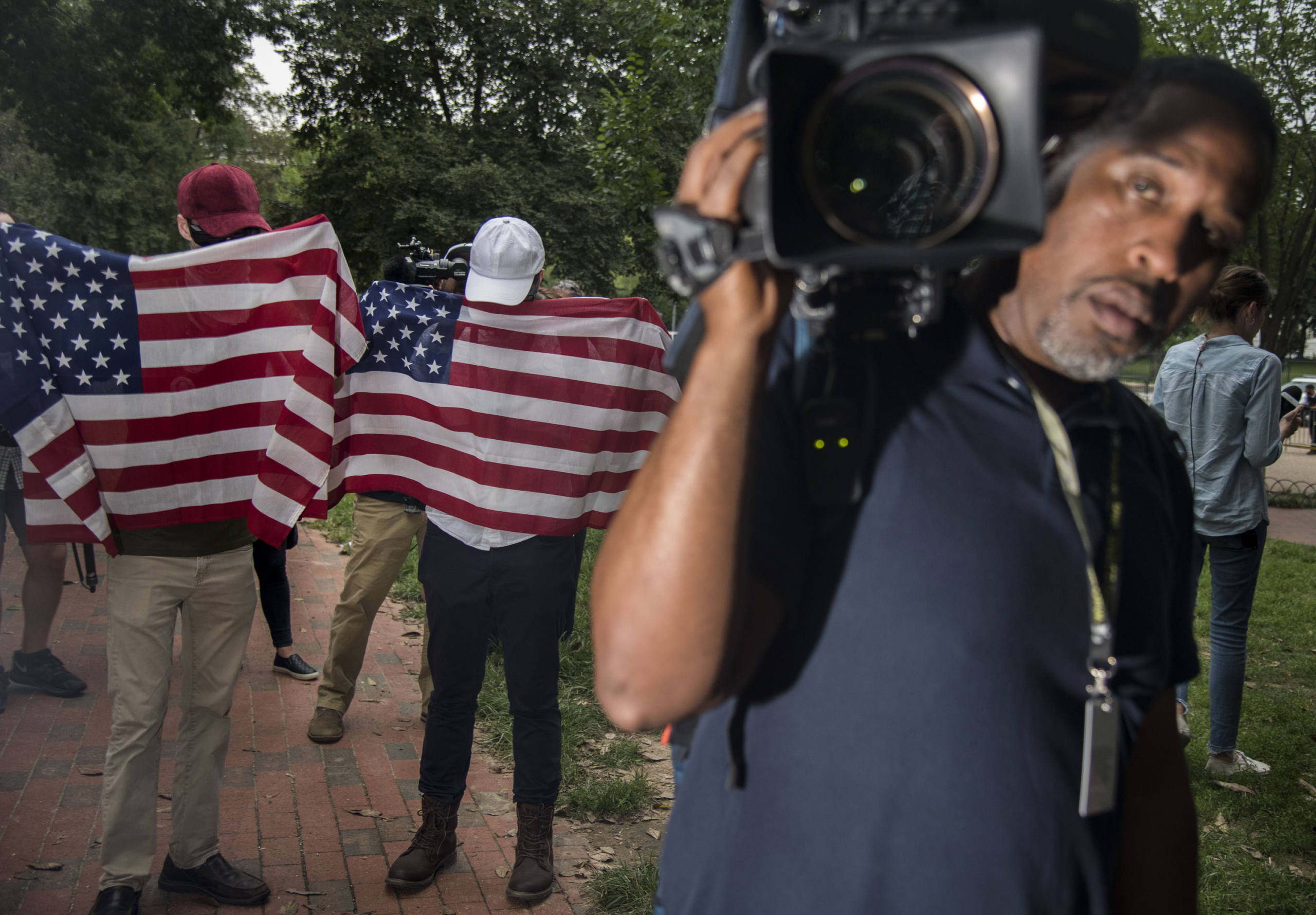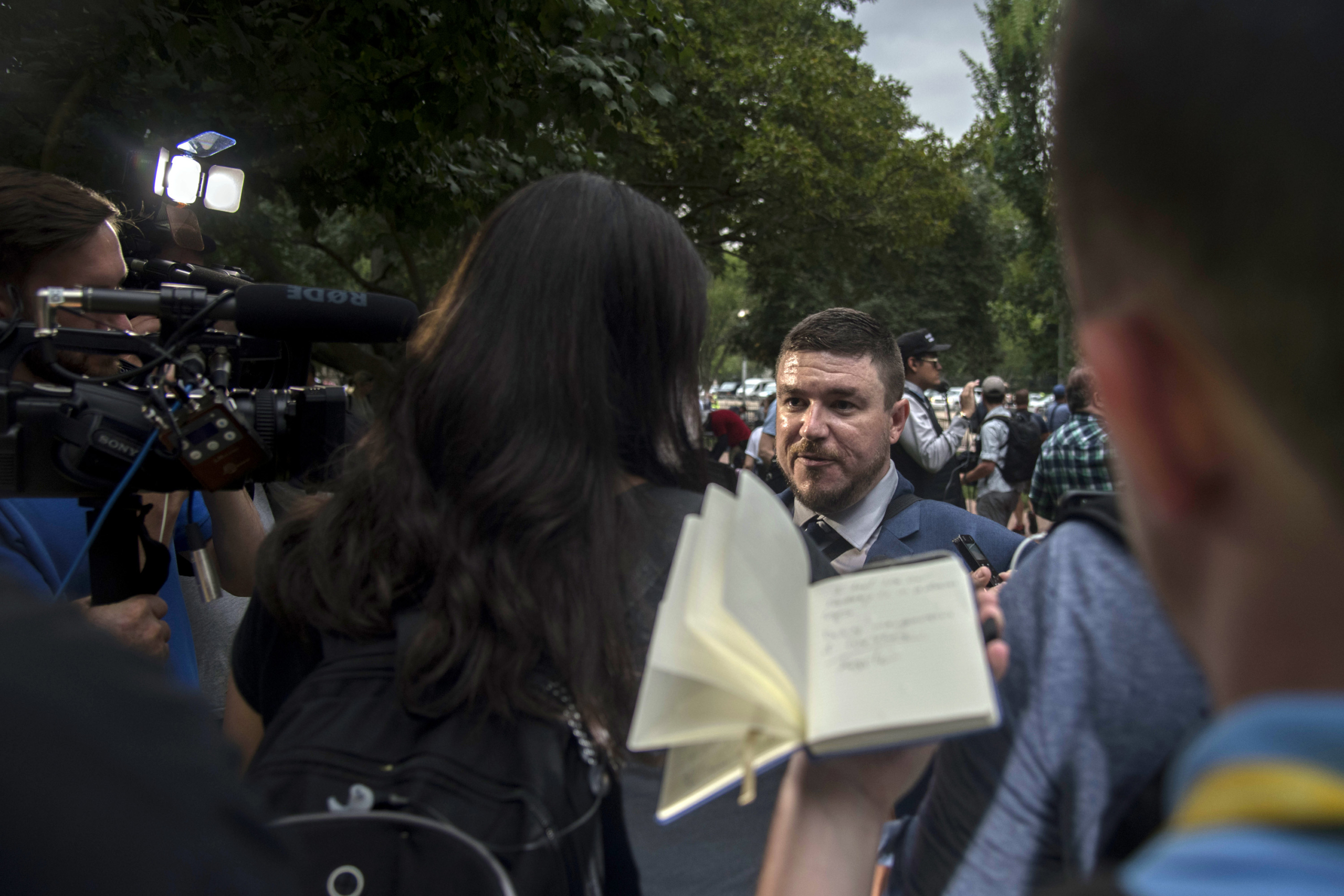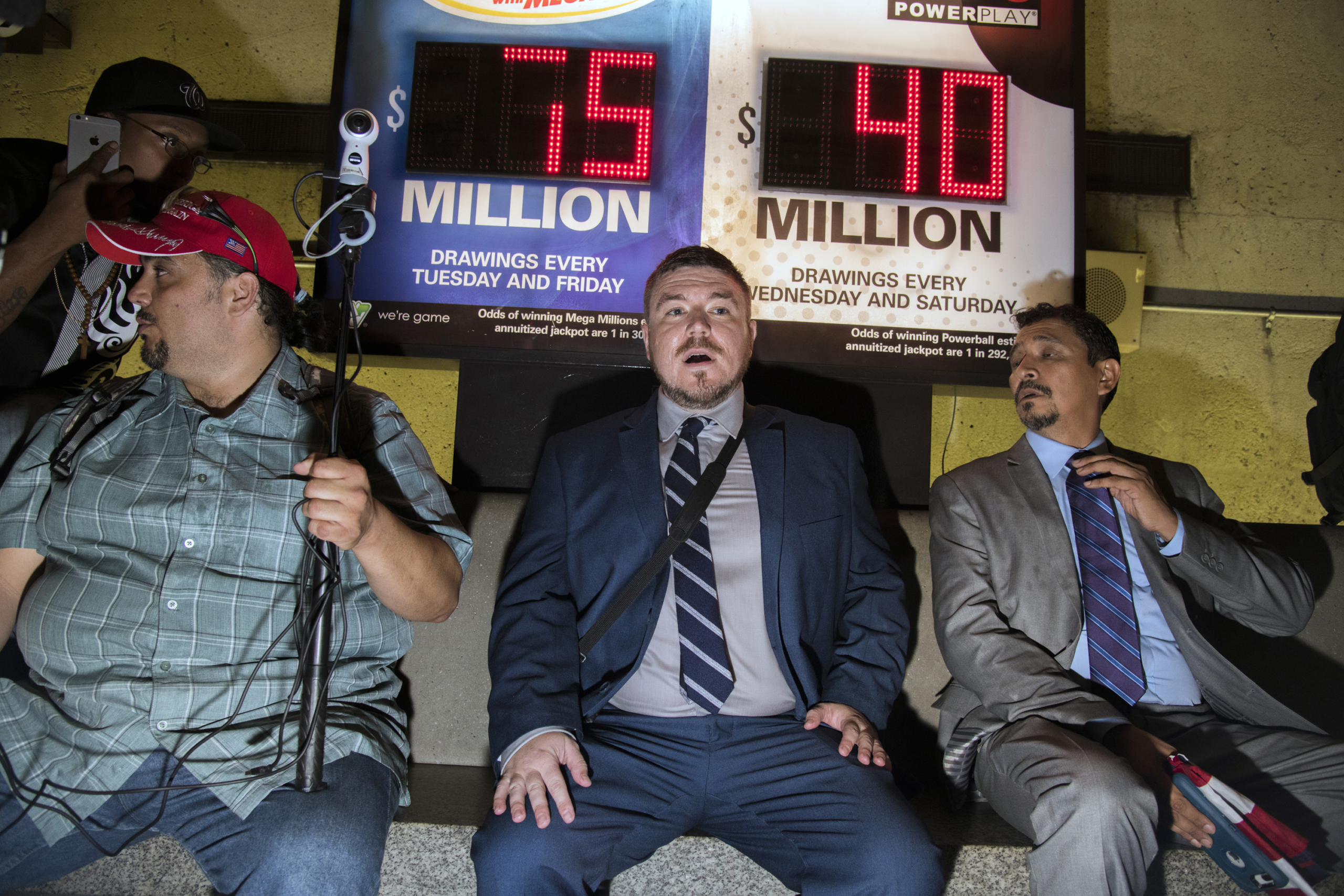A media riddle: if white nationalists hold a rally in Washington and no one shows up, is it still news?
It was on Sunday, as hundreds of reporters from around the world converged in front of the White House to chronicle the second Unite the Right protest, comprising about two dozen people led by a 34-year-old named Jason Kessler. The event, promoted in media interviews by Kessler to mark the one-year anniversary of protests he had helped arrange in Charlottesville, wound up being primarily a photo-op for him and his posse. The rally, such as it was, ended soon after it began. Counter-demonstrators amassed a much larger group.
News outlets, most notably NPR, justified giving Kessler airtime in advance of the rally in part because he was the person making a march on Washington happen. On Friday night, ABC featured a segment on Kessler, too. “I hope they play more on Good Morning America,” he told CJR over the weekend, in Washington. Even if Kessler couldn’t muster more people to stand by his side, many news outlets still turned out to watch him try. At the metro station in Foggy Bottom, reporters had questions: “What’s your message to the counter-demonstrators who say you represent a dark side to American life?” “What do you say to people who are in fear for their safety and well being?” “Would you say you’re just an opportunist—that this is an opportunity to get some media attention?” Kessler, talking with every member of the press in sight, accused reporters of sensationalism.
From archives: The outrageous editorial by a Charlottesville daily that preceded violence
Accompanying him was a security guard, George Mesones, a 48-year-old Latino man in a light gray suit. “You command the narrative,” he told Kessler. “You give them what they want, and you give them the unexpected.” Also with them was Brandon Watson, 28, an African-American man from Bristol, Virginia. He’d only known Kessler for a few weeks, but said that he was joining up because he believes in civil rights and freedom of speech. Kessler encouraged him to give interviews. (“He had like 10 other black guys ready to march,” Mesones told Kessler. “But they all bailed last minute.”)
As they emerged above ground, members of the press—by now realizing that the event was a flop—swarmed. Photographers and video crews negotiated with police for space.
“Go slow,” an officer told Kessler. “I need a controlled exit.” Kessler unfolded an American flag and followed the officers with Mesones and Watson, who was wearing a flag like a cape.
A CBS reporter approached. “Jason, is this a racist rally?”
“No.”
An officer pushed the reporter to the side as Kessler’s group continued on.
“It’s a free-speech rally.”
Police lined the avenue in double rows of motorcycles and bicycles, bumper to bumper, sirens wailing. Mesones and Watson stayed close to Kessler. Reporters walked backwards, dripping with sweat, and several fumbled with lens caps as their hands turned slick. A boy in the march, wearing a mask, raised his hand in a Nazi salute and shouted an anti-Semitic slur.
At a press conference, in Lafayette Square, Kessler gave a speech, leaning into boom mics. Off to the side, Watson talked to reporters, holding an American flag behind his head. Mesones livestreamed. The cameras kept rolling.
ICYMI: New Yorker writer makes important observation about Omarosa’s recent Trump bombshells
Amanda Darrach is a contributor to CJR and a visiting scholar at the University of St Andrews School of International Relations. Follow her on Twitter @thedarrach.


